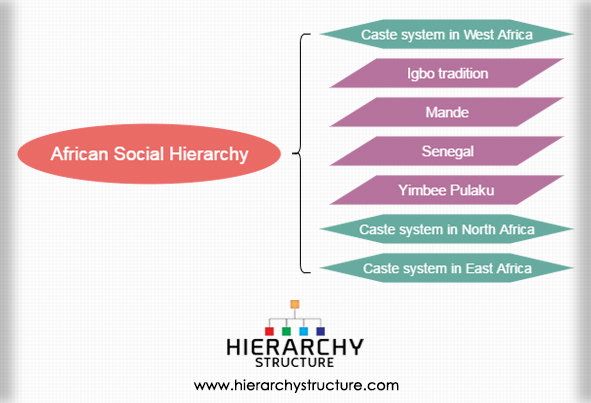Africa is a huge continent and home to various types of people. It is therefore obvious that the same social structure cannot prevail in all parts of the continent. It can also be said that oldest human civilization generated in Africa. The historically developed civilization too had a hierarchical society. The society remains hierarchical even today. But the nature of hierarchy is different in different areas. The social hierarchy in the western Africa is not the same as that in southern Africa. Therefore, one needs to study the hierarchical structures of various regions separately.

In the case of Africa, the caste system varies from one community to the other. Some of the societies have a rigid hierarchical caste structure, while in some others, things are not so rigorous.
Caste system in West Africa- There are various caste based system in the western Africa alone.
- In the Igbo tradition, there is a group of people known as the Osu. These Osus are traditionally considered as sub humans, sacrificed to some deity, and thus are segregated from the rest of the population. Osus of the modern day are those people, whose ancestors were sacrificed to some deity. They are thus living in a closed society, where they can not marry any Igbo persons, and has to remarry within their caste.
- Mande is another society in the eastern side of Africa, whose society is divided on the basis of occupation and ethnicity. In the highest stage of the society stood the Horons, or noblemen, who traditionally practice agriculture, or are fishermen, or warriors or animal breeders. The lowest rank of the societal pyramid is occupied by the slave caste or the Jonow. These people were made into slaves during some tribal wars, or such situations. This caste system is based on the trades. For example there are Griots, who wrote beautiful poetries for their patrons.
- In Senegal, there is a caste structure system in vogue known as the Wolof system. According to this hierarchical system three types of the people are to be found in this state. They are, the Geers, who are freeborn or of noble origin, Jaams, or the slaves and their descendants, and the Neno who are the outcastes of the society.
- In some other parts of West Africa, societies like Fula(ni) system have caste divisions. In this society, people who are not free born or noble (or Fulabe, as they are called) are known as Yimbee Pulaku.
North Africa- In some states of North Africa, the Tuareg social structure is prevalent. In North West Africa the society was traditionally stratified, with the Hassane or the warrior tribe being the higher tribe, than the Znaga tribes.
East Africa- In parts of East Africa the ruling classes are called Tutsi, who are the cattle owning class. In the hierarchical structure, the class right next to them are the Hutus, who are generally farmers. Also a very small percentage of the population is the pygmies.
These are in a nutshell social hierarchies prevalent in various parts of Africa, even today.
